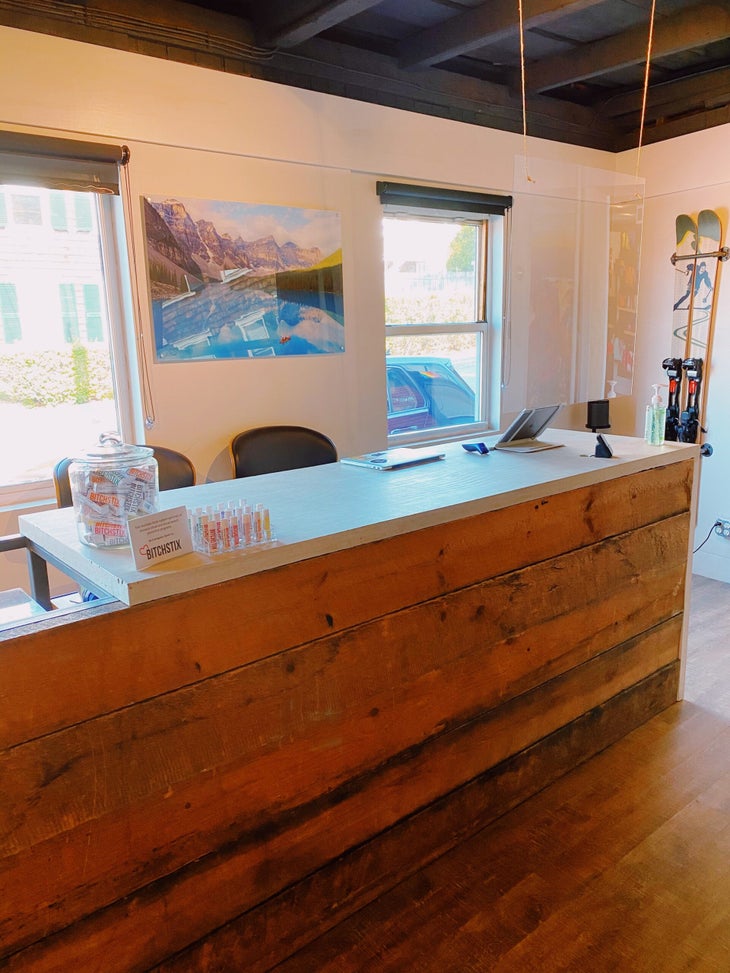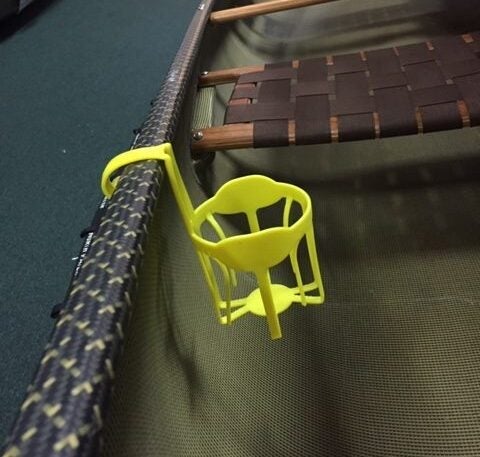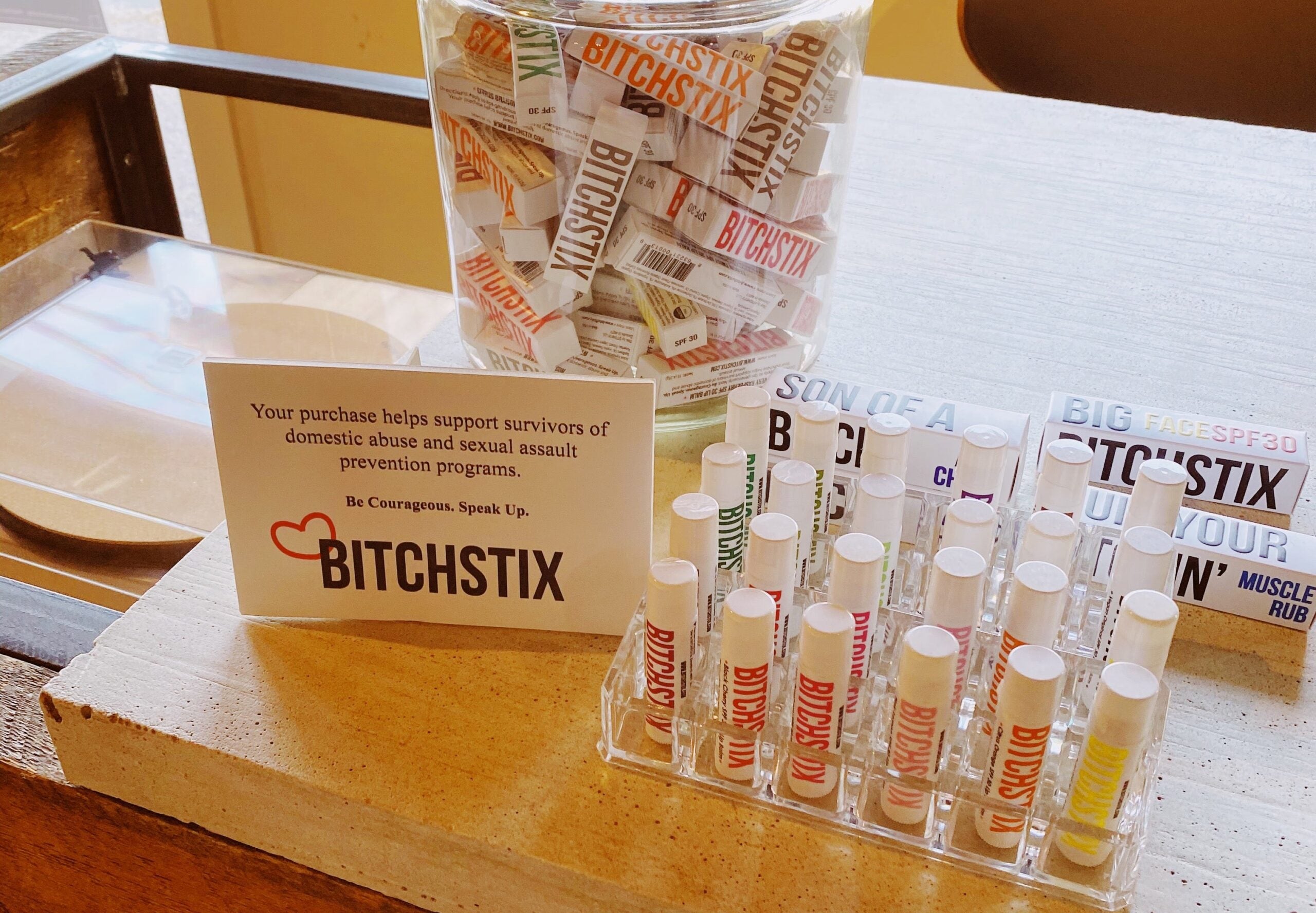As retail owners, you’re always looking for clever new ways to move product. One strategy as old as the business itself is “counter candy,” those $5 to $20 items next to the register that are small enough for shoppers to throw in their baskets at the last second.
When presented poorly, these goodies are little more than an annoyance, a desperate grab to wring a few more dollars from your patrons. Done right, however, they can punctuate a shopping experience with a fun, final flourish—and boost your bottom line as well.
We spoke with three independent shop owners across the country to figure out what makes for profitable, irresistible counter candy in outdoor retail.
Get Their Attention Quickly
A customer has about 30 seconds to decide whether a last-minute purchase is worth it, so you need to grab his or her attention fast.
You can do this in a few different ways. Color and variety are one. At Rutabaga Paddlesports in Monona, Wisconsin, marketing and inventory manager Kate Westphal says two products sell like crazy every year: a clip-on cupholder for boats called the Can-Panion, and Buffs. It’s no coincidence, Westphal says, that both are offered in big bins next to the register in a huge array of choices.
“We always try to keep those bins filled with lots of colors and patterns. People love to sort through and pick out their favorites. As long as you keep the display full, people gravitate to it.”
Choosing products with grabby, unusual packaging is another winning strategy. At Intrinsic Provisions in Hingham, Massachusetts, owner Mark Boles sells a lip balm called Bitchstix next to the register—a display that always gets people talking. The brand name is front and center in big, bold letters.
“That is one of our all-time bestsellers,” Boles said. “People always ask about it. They want to know about the name. I’m sure that will stay right where it is on the counter for a good long while.”

Display Items with a Story
The provocative grabbiness of the Bitchstix display at Intrinsic Provisions isn’t the only reason the product sells, Boles says—it’s the story behind the brand that really closes the deal. The company was named in honor of Ruth Bader Ginsburg, whose male law school classmates used to use the epithet behind her back, to which she famously responded, “Better bitch than mouse.” If you put a grabby product by the register, people are going to ask about it, and you’d better have a good story to tell. Funny or usual stories work; even better is a story that speaks to people’s values.
Boles, for instance, donates a portion of the profits generated by Bitchstix sales to sexual assault prevention programs. Once that detail is disclosed, he says, the relatively steep price point ($10 for a single stick of lip balm) becomes almost irrelevant. The meaning behind the product is what matters.
“People usually throw two or three in their basket as soon as they hear what the product means and what it stands for,” Boles said.
Plus, the sale helps a worthy cause. Everybody wins.
Seed Counter Candy Throughout Your Store
At Rutabaga Paddlesports, those bestselling cupholders called Can-Panions do well for several reasons. Yes, they’re cool, useful accessories that anyone would want. Yes, they’re inexpensive. And yes, they’re presented in an attractive way. But the folks at Rutabaga use another tactic to make them irresistible to customers: They seed them throughout the store in high-traffic areas.

There’s lots of data to suggest that consumers are more likely to purchase goods they’ve seen advertised on a consistent basis. This strategy works much the same way.
“Having the Can-Panions placed around the store allows our salespeople to bring them into various conversations in a casual way as they’re talking to customers,” Westphal said. “It’s a great way to get people thinking about them.”
If you want to encourage snap decisions at the register, make sure customers already have a particular product in mind before they get there.
Offer a Sense of Completion
Most shops offer branded items like stickers, coffee mugs, and keychains. From a marketing standpoint, it never hurts to push products emblazoned with your store’s logo. The problem is, most retailers position them all wrong.
Customers buy these items for a couple of very specific reasons, Westphal says. Either they want to show their support for the shop and its owners—a “thank you” purchase—or they want to commemorate their own experience at the shop with a souvenir.
Offering store-branded items at the register, rather than burying them somewhere on the shop floor, gives customers the chance to purchase the feeling of satisfied completion that defines the very best retail experiences. People crave that sensation, Westphal says. They’ll shell out a little extra to get it.
“We have lots of out-of-towners who come through the store,” Westphal said. “They usually want something to take home with them to commemorate the visit. That urge comes to them when they’re standing at the register, not when they’re shopping.”
If your store-branded items aren’t moving, consider shifting them up front to offer people that feeling of satisfaction they crave—a neat little bow on the whole experience.
One Last Note
It’s important to remember your store doesn’t exist in a vacuum. What’s going on outside your doors heavily affects the way people shop, especially when it comes to impulse purchases, says Marie Kelso, the owner of Outabounds Ski & Board in Centennial, Colorado.
“We’re a ski shop that’s not on the side of a mountain, so I don’t stock anything you can also buy at Wal-Mart,” Kelso said, referring to items like hand warmers, sunscreen, and sunglasses. “If you’re already out skiing and you realize you forgot your sunglasses, you might buy a pair at the register out of necessity. For us, those products simply don’t move.”
For that reason, Kelso says she hasn’t had much luck with last-minute counter sales in general. Ski gear doesn’t lend itself particularly well to impulse buying, she argued. People come to Outabounds for bigger purchases. If it’s small and cheap, they get it elsewhere.
It’s important to make sure the products you’re offering are uniquely tailored to your shoppers’ needs in the broader context of your market. If something isn’t working, don’t try to force it.


